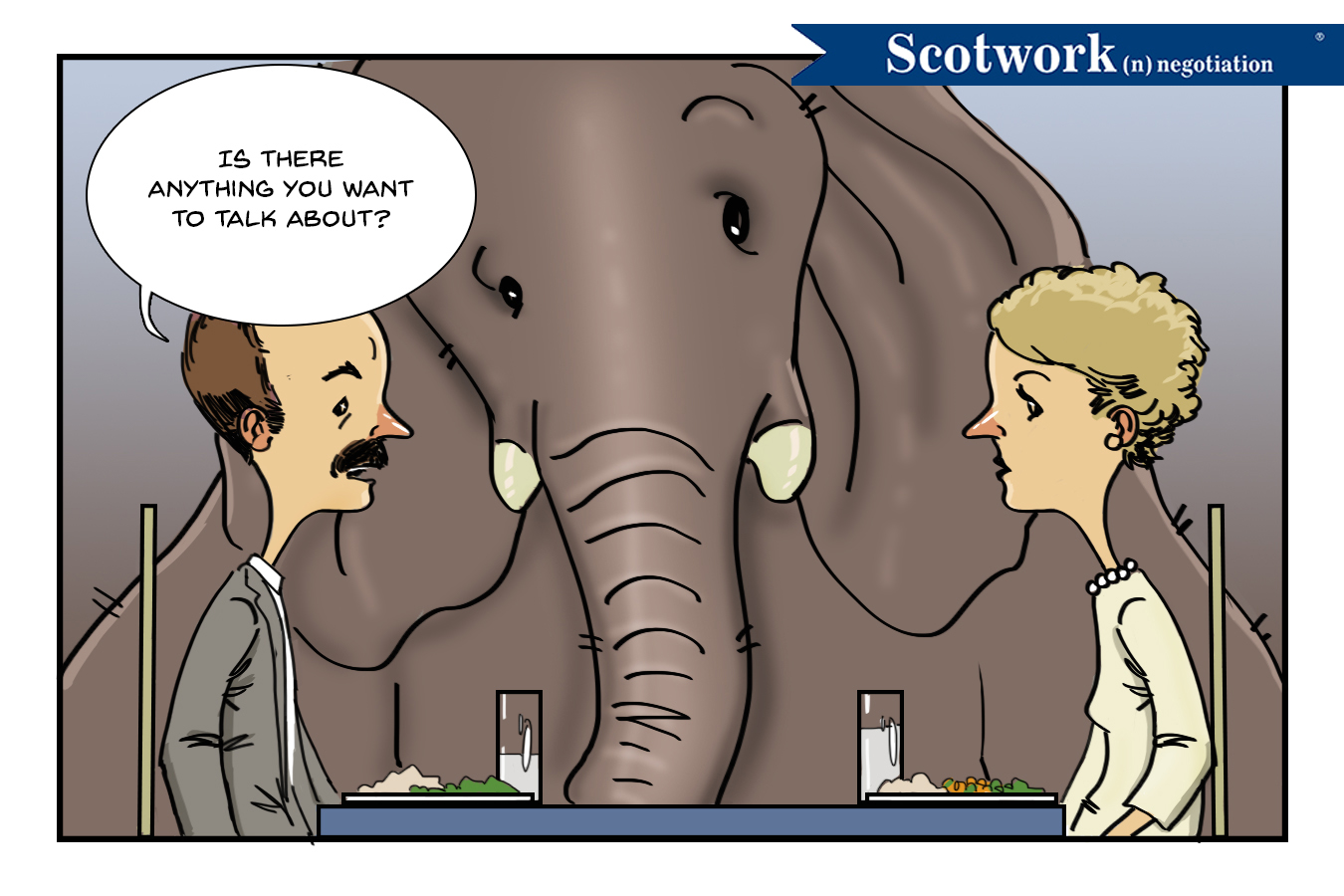There it is. You can’t ignore it. But you do. No one says anything. We pretend it’s not there. But we’re all waiting for it to come up. We talk around it. We don’t talk about it. We’re hoping it just goes away. But it doesn’t. Then it happens. The elephant moves and now it has to be dealt with because you can’t deal with any else other than the elephant. So if we know the elephant is there, why are we not dealing with it?
We’ve all been in the situation where there is something that needs to be addressed but yet, it’s not. It’s known as the “elephant in the room”. It’s so looming and takes up so much space, you have to deal with it. However, people often avoid them because they don’t know how to deal with it or are afraid of the ramifications of confronting someone’s elephant.
I naturally want to confront issues. When a problem or conflict arises I charge out to meet it head on. In my mind I think, “better to deal with it now then let it become a bigger problem later”. I also don’t like to leave things unsaid or unresolved. I like closure. I like to check the box so I can move on. The advantage of this is that elephants aren’t ignored. Problems are dealt with in the moment. Nothing lingers to cause future issues. However, one of the glaring downsides is that I often walk into highly emotional conversations that can quickly devolve into unproductive arguing because I just want to get past it instead of taking the time to actually address or resolve it.
Deftly dealing with elephants is a worthwhile skill to learn. This is even more so at the negotiating table because elephants can lead to ambiguity. Ambiguity leads to a sense of uncertainty that can unravel or derail a deal or create massive confusion when implementing the deal. Here are three tips that were passed onto me that I use to approach the elephants:
- Confirm. I have made the gaffe that I assumed there was an elephant in the room when there wasn’t. Before acting, test your assumptions by asking questions about the situation. Confirming that there is an elephant can save you an unfortunate misunderstanding.
- Be direct and honest. The elephant exists because people have not been as direct or honest about the situation as they should be. Once the elephant has been confirmed, don’t beat around the bush and don’t soften the situation by using soft language. Instead, I find a direct and honest approach builds trust and a foundation to work from.
- Be empathetic. Elephants are inevitably emotional because they are usually uncomfortable topics that people have avoided. You can be direct and honest and empathetic all at the same time. It requires awareness of how those around you are handling the situation and being empathetic towards their emotions.
The sooner you tame the elephants, the sooner you can move past them and deal with the issues at hand. If you choose to ignore the elephants, beware of the stampede to follow.
Tame the Elephants
Taming elephants can get emotional. Having an emotionally unattached advisor can help you tame even the largest of elephants. Don’t let the elephant derail your negotiation, call us to help you through your negotiation.We can be your advisor, we can be your coach, and we can be your trainer. Whether you bring us in to create your strategy, or help you prepare, or develop your team’s negotiating skills - we can help you win at the negotiating table.
We’ve been consulting and teaching our proven negotiation methodology for over 40 years. We know the process, we can identify the skills required, and we have the techniques to negotiate better deals for you. Call us and let’s discuss what we might be able to do for you.

